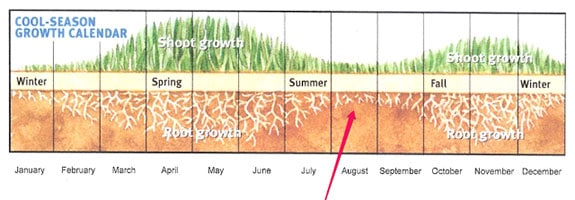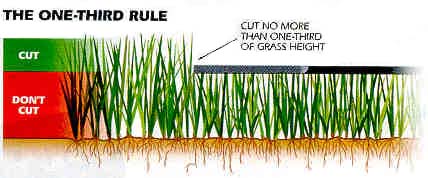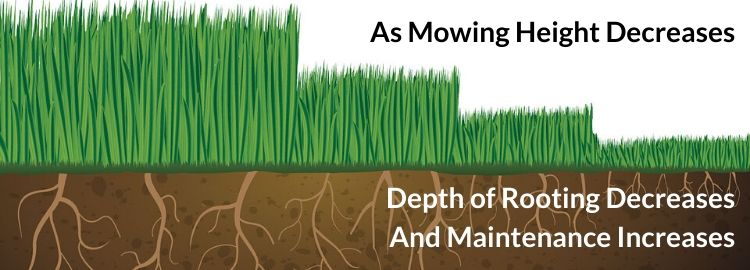Every year, homeowners wake up to the reality that their lawns and gardens are a living collection of biological organisms that start to grow again each spring with or without our effort and input.
But the difference is, what you do or do NOT do will affect the health. longevity and appearance of these plants, and they need your love and care!
So this weekend when you are getting your green thumb out again, it’s important to remember 7 key lawn tips, especially when it comes to growing a healthy Lawn.
Whether you have hired a lawn care company or have decided to try and give-it-a-go all by yourself, you need to remember to not work against yourself or your Professional lawn care company.
Here are a few important basic lawn care tips:
1. Weed Control applications DO NOT work all by themselves, contrary to popular belief, the BEST Weed Management is a system of several components working together to fight off weeds controlled by YOU, and in partnership with LawnSavers.
2. Get Mowing Already! What have you been waiting for? A lawn in the Greater Toronto Area should have been mowed at least at least once or twice by the  beginning of May, and you should be mowing every 5 days through the spring to thicken your lawn most effectively and to lessen the chance of weeds to gain a strong foothold (roots) in your lawn. Both plants (turfgrass and weeds) are vying for space, and what you do now will help decide who wins! Don’t leave them to ‘show’ your lawn care company how bad your lawn is; Besides, we’ve seen worse, and the only thing you are going to shock is the grass plant when you eventually mow, not us!
beginning of May, and you should be mowing every 5 days through the spring to thicken your lawn most effectively and to lessen the chance of weeds to gain a strong foothold (roots) in your lawn. Both plants (turfgrass and weeds) are vying for space, and what you do now will help decide who wins! Don’t leave them to ‘show’ your lawn care company how bad your lawn is; Besides, we’ve seen worse, and the only thing you are going to shock is the grass plant when you eventually mow, not us!
3. BAG THE CLIPPINGS!!!! (if you have a weed problem) Mowing when weeds are in flower will spread weed seeds around your yard if you don’t send those fresh cut clippings into your mowers bag attachment. How else did you think the weeds started growing? they blew in from somewhere and took up residence rent-free! When your lawn is greener, thicker and healthier with less weeds, then by all means, go back to mulching. Hopefully you learned in step 2 – never wait too long to mow, but if you are mowing more than 1/3 of the blade (about 1.25″ or longer, you must bag those clippings too)
When your lawn is greener, thicker and healthier with less weeds, then by all means, go back to mulching. Hopefully you learned in step 2 – never wait too long to mow, but if you are mowing more than 1/3 of the blade (about 1.25″ or longer, you must bag those clippings too)
4. MOW MORE OFTEN: If you are mowing more frequently you will achieve 3 VERY IMPORTANT objectives. First, you will stimulate growth of the turf grass plant encouraging it to spread and tiller, which really means ‘grow in thicker’, which means less of a chance for weeds to invade. Second, the flower heads of the more common weeds that are growing right now, will not get a chance to establish a flower and the resulting seed head that is part of the weed flower developing. Third, when you never allow the weed plants to mature, they don’t develop into a stronger plant the way they do when you wait to mow very week or two, and by then, the weed has grown unfazed by your well-intentioned intervention that you never got around to. “I dare you to mow your lawn twice a week until the end of June, once a week during July and August and twice a week again in September and October and see if it starts solving a lot of your problems!”
5. MOW AT THE CORRECT HEIGHT: Healthy lawns in the Toronto area are generally made up of Kentucky Bluegrass, Perennial Rye-grass and some fescues. They all have an ideal height of 2.75″-3″, which is essentially the height of a business card. If your lawn isn’t that high after mowing- raise your mower! 
Proper mowing height develops healthy roots required to get through summer heat and dry spells You wouldn’t trim your trees down to the stump and expect it to regrow magically healthy. Why do some people always insist on doing that with their lawns??? Don’t be a lawn scalper!
6. FERTILIZE AND BUILD YOUR SOIL: Lawns need proper nutrients AND the soil underneath it needs specialized organic and biological ingredients to build a supportive environment for microbial activity. In fact, the best defence against weeds is a healthy growing stand of turf grass that is getting all the essential vitamins and nutrients that the grass plant and the soil needs. University studies show that a properly fertilized lawn will have less than 10% weeds after 2 years. And don’t fall for cheap high nitrogen fertilizer applications that are applied every 4-5 weeks. Your roots needs to be spoon fed slowly with a high percentage of Slow Release fertilizer and soil invigorators that don’t create surge growth, doesn’t leach through the soil and is great for the environment too!
7. WATER: When lawns are thirsty, they cant wait, just because you don’t have the time they still need 1″ a week. Water deeply once a week for a healthy lawn. Note: just because it rained downtown while you were at work, doesn’t mean it rained at your house in the suburbs. (or vice-versa). If you have an automatic sprinkler system, Learn how to make the proper adjustments that support deeper less frequent watering.
Don’t work against what the grass wants to do- work with it! Spraying your lawn with Weed Treatments will help reduce the weeds over time, but NOT if you aren’t doing it in conjunction with the healthy lawn care tips mentioned above.
Whether you need weed control in Markham, Vaughan, or anywhere across the GTA, it’s important to act early to prevent invasive plants from taking over your lawn or garden.
If you can’t do it alone, LawnSavers is always here to help you with proper nutrition and soil and plant fertility programs, weed control, grub control, mosquito control near you and insect pest management and professional lawn repair at home or your business.
Call us today: 1-888-503-LAWN
 9.2/10 rating with over 629+ reviews
9.2/10 rating with over 629+ reviews






